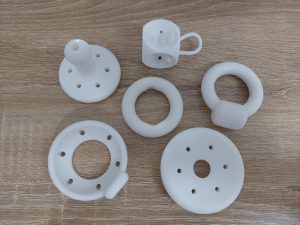Here are our five top practical tips for pregnancy, drawn from what we teach every day at Secret Women’s Business Physiotherapy.
1) Pelvic floor exercises: keep it strong!
Pelvic floor exercises in pregnancy are associated with:
• decreased urinary incontinence in late pregnancy
• decreased urinary incontinence early post-partum
• decreased duration of the second stage (pushing phase) of labour
• decreased risk of 3rd and 4th degree perineal tears
So keep up those daily squeezes! Your SWB physiotherapist will assist with correct activation and a program suited to your stage of pregnancy to ensure the best strengthening outcomes.
2) Perineal massage from 34–35 weeks
Beginning perineal massage at 34–35 weeks can reduce complications with vaginal delivery. A 2020 meta-analysis showed perineal massage in a first pregnancy had:
• 21% decreased risk of episiotomy
• 64% decreased risk of 3rd & 4th degree tears
• reduced length of second stage of labour
• 70% reduction in postnatal anal incontinence
• decreased postnatal perineal pain
Your SWB physiotherapist will educate you on how perineal massage should feel, how to perform it, and when it’s appropriate. Many women prefer guidance; we can provide in-clinic sessions and, if you wish, we can also teach partners how to assist.
3) Address Pelvic Girdle Pain
Pelvic girdle pain (pubic symphysis and/or sacroiliac joint pain) is common in pregnancy and in most cases recovers quickly after delivery. Early physiotherapy helps you stay active while reducing pain.
Tips from the SWB team to get you started:
• Keep your weight even through both feet when you move through the day.
• Keep legs together for getting out of the bed and car; sit down to dress and undress.
• Keep active, within pain limits.
• Avoid uneven movements like standing on one leg, shifting weight all to one side, or crossing legs.
• No big strides or jumps; minimise stairs where possible.
• Avoid breaststroke legs in the pool.
Your SWB physio will discuss your current regime and strengthening exercises, sleeping positions, and support options in bed. External support with a pelvic belt is well supported by research; we can discuss options and assist with sizing and fitting.
4) Stay strong
Current research suggests that staying strong through the entire abdominal wall has several benefits. This can reduce rectus diastasis (abdominal separation), reduce pubic symphysis pain in pregnancy, and shorten the second stage of labour (pushing phase). Be guided by your medical team on safe options through pregnancy—this is not a time to take up marathon running or contact sports – physiotherapy guided exercises classes and pregnancy pilates can be excellent options.
Our team work closely with the physiotherapists at coregymball.com if you’re looking for an option in the Sutherland Shire.
5) Eat well
Nutrition shapes energy, stool form, tissue health, and recovery. Many pelvic symptoms (constipation, straining, urgency) improve with healthy eating. Constipation can worsen through pregnancy, and unfortunately this can put enormous load through the pelvic floor – which is absolutely what we want to avoid!
Foundations to consider
• Regular meals and snacks to stabilise energy and support bowel rhythm.
• Fibre variety (soluble and insoluble) from wholegrains, fruit/veg, legumes, seeds
• Hydration spaced through the day (sips, not gulps)
For personalised guidance, we recommend working with dietitian Julia Dixon, a dietitian who specialises in pregnancy and women’s health. Julia offers telehealth consultation and also works from the SWB rooms one Saturday a month. jddietitian.com







